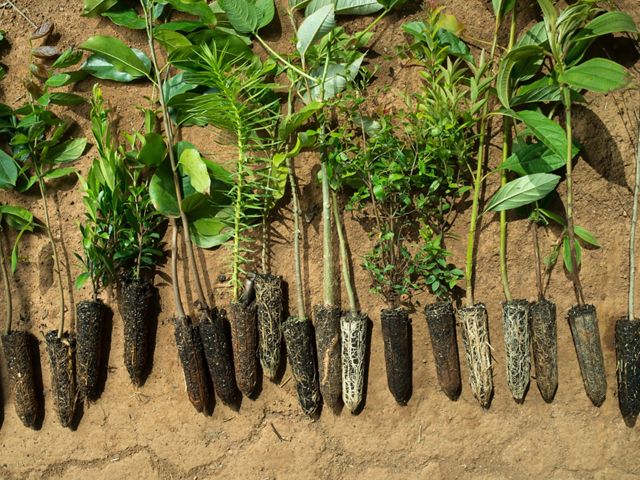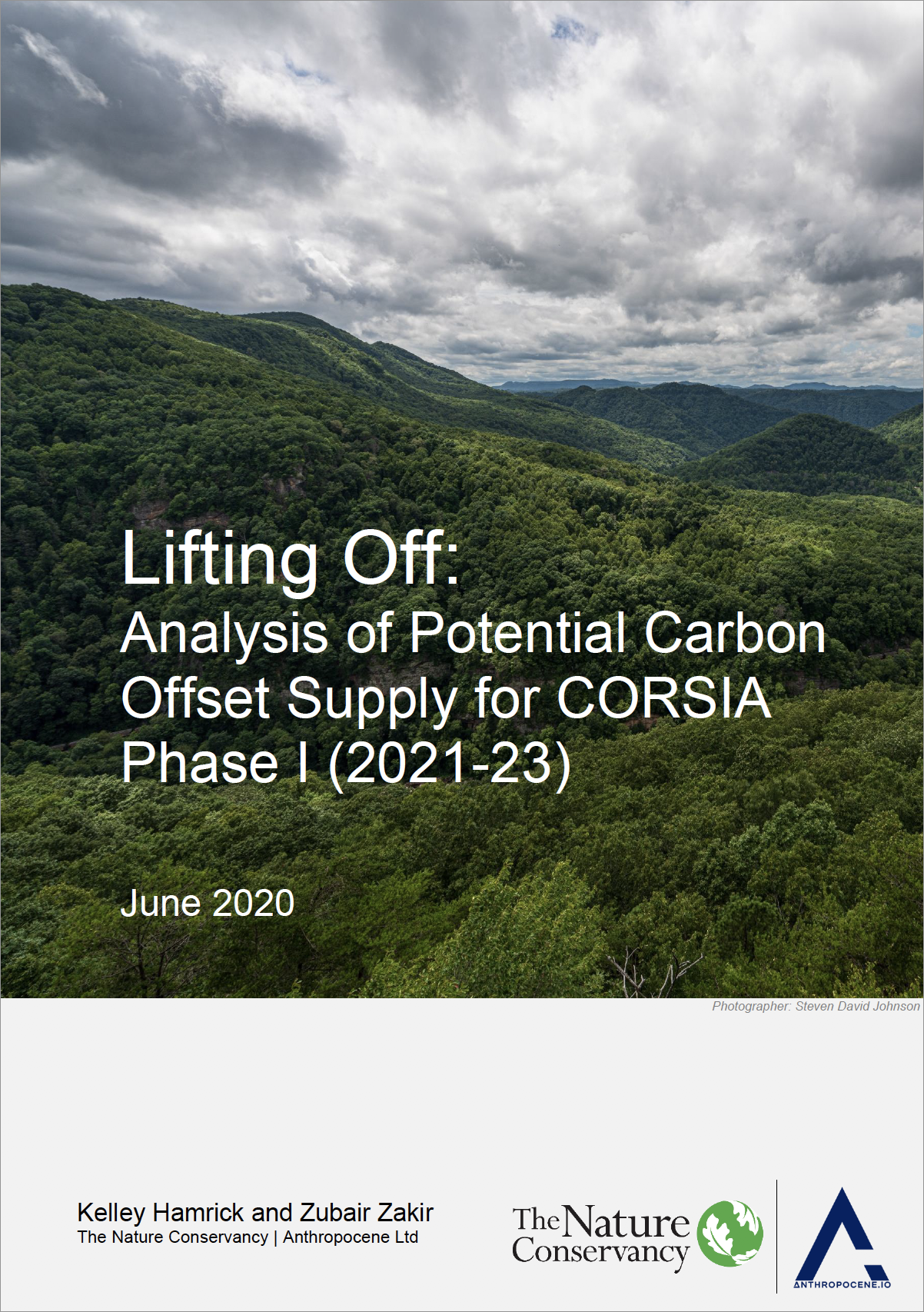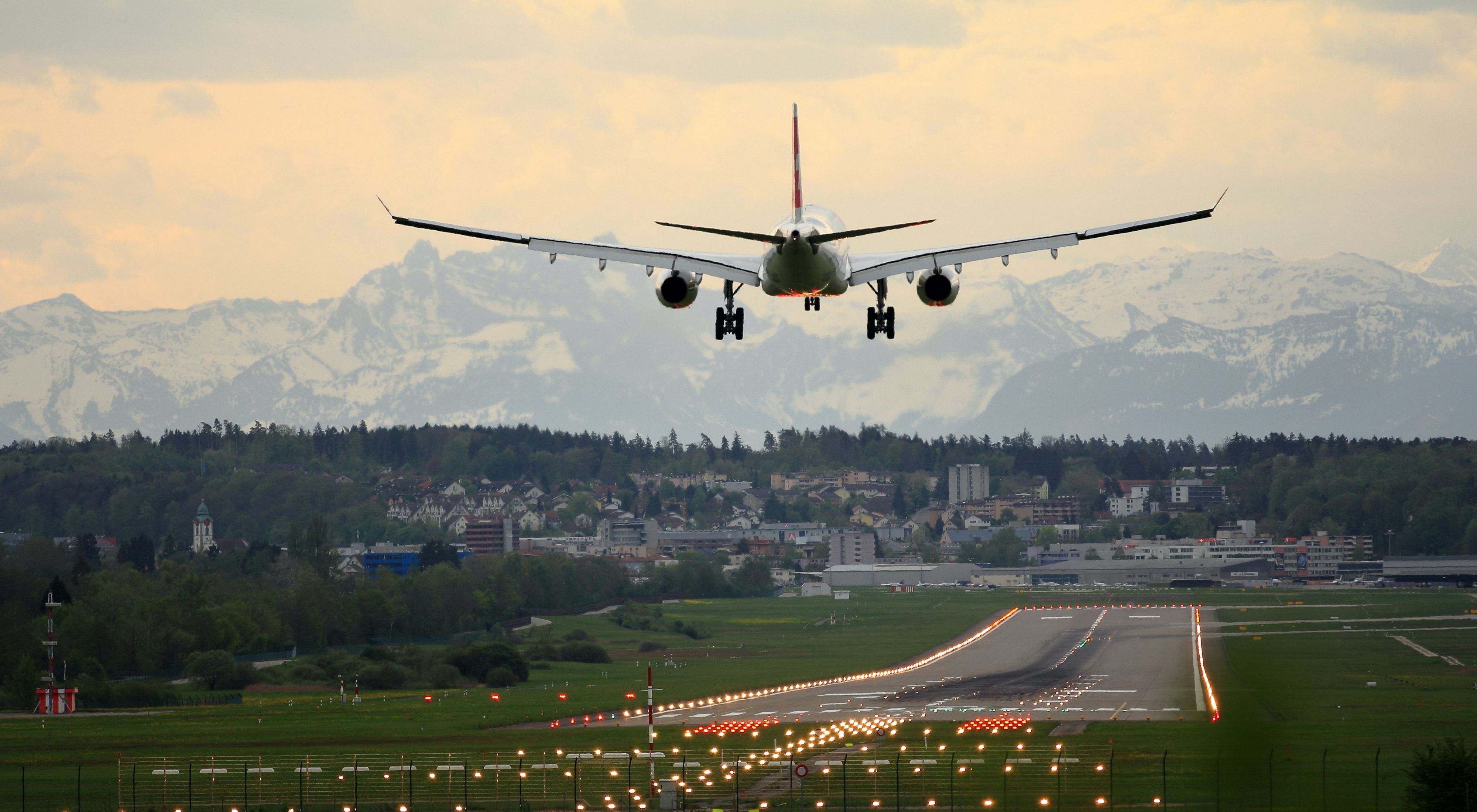Turbulent Times: Aviation, Climate Change and COVID-19
International airline climate program faces strong headwinds as it begins in 2021
By Kelley Hamrick, International Climate Policy Advisor, The Nature Conservancy
Travel has dropped dramatically since the COVID-19 pandemic started. Global passenger flights have dropped an estimated 70 percent according to the International Air Transport Association (IATA), and it will likely remain that way for the immediate future. But I’ll confess—I’m dreaming of the day I can once again safely fly across the United States to see my family. And I know I’m not alone.
Before the pandemic upended the way we travel, global demand for flights had been increasing rapidly each year. If that demand returns, it will have serious implications for the climate. While aviation currently contributes 2 percent to global emissions annually, more and more people fly every year. Even if the world succeeds in restricting global warming to +1.5C by 2050, pre-COVID forecasts suggest that commercial aviation could contribute 27 percent of global emissions by mid-century. Under the best-case scenario, other sectors like energy and construction would balance this out to some extent by emitting much less by then… but the worst-case scenario is of course that we overshoot the cap entirely.
The good news is that airlines have a strong motivation to reduce emissions; jet fuel is typically an airline’s largest expense and source of emissions. Reducing just one ton of carbon dioxide or equivalent emissions (tCO2e) could save airlines approximately US$225. Because of this powerful economic incentive to reduce emissions, airlines have already seen major gains in operational and design efficiencies: every new airliner produced is, on average, 20 percent more fuel efficient than the model it replaces.

This raises a question: if commercial aviation’s fuel efficiency has increased so dramatically, then why are emissions still rising?
The answer comes from all of us. Just as I’m planning on flying to see my family once it’s safe, so too are millions of others. More and more people are taking flights every year, which means that even as emissions per flights have decreased, the total number of flights—and so total emissions—keeps rising.
One approach is for the world to simply stop taking so many flights—a growing movement that has gained traction through Sweden’s flygskam ("flight shame") phenomenon. Alternatively, airlines will need to switch from CO2-polluting jet fuel to sustainable alternative fuels (SAF). These alternatives, based on environmentally responsible biofuels, power-to-liquid or other alternative fuels, represent the key to unlocking low-carbon flights in the longer term. But so far, little SAF supply exists and that which is available tends to be costly.
Some commercial fuel suppliers are exploring creative ways to boost supply: for example, SkyNRG launched its Board Now program last year, which invites corporations to commit to five years of SAF purchases. Similarly, the Clean Skies for Tomorrow coalition is bringing together potential buyers and suppliers, to brainstorm new products and investments that can have potential to create a viable supply of SAF by 2030. There’s also been a recent spike in airlines committing to greener travel through a variety of actions, from signing long-term SAF purchasing agreements to investing in electric aircraft. And as the world grapples with COVID-19, we’re also seeing governments like Austria and France demand stronger environmental performance as a condition of bail-out and economic stimulus packages for beleaguered airlines.
Our global insights, straight to your inbox
Get our latest research, insights and solutions to today’s sustainability challenges.
Sign UpMost "greener aviation" announcements include some level of commitment to purchasing carbon offsets from other sectors in the short-term, effectively creating a stopgap until longer-term investments in sustainability start to deliver. Just in the last year we’ve seen announcements a from KLM, British Airways, Qantas, JetBlue, Etihad and Delta. This deluge of commitments, which range from increased R&D spending on sustainability to full on net-zero emission goals, signals a growing awareness within the aviation industry of demand for cleaner travel, as well increasing pressure from both legislators and consumers.
Quote
Natural climate solutions have potential to meet offset demand in the longer term, but will require more on-the-ground implementation and upfront investments in order to fulfil their full potential.
While it’s certainly promising to see this rise in voluntary corporate action, there’s an even bigger initiative set to launch next year: the International Civil Aviation Organization (ICAO) has set a goal of carbon neutral growth for international aviation starting in 2020.
ICAO is a United Nations body, meaning its decisions reflect that of all countries around the world. While countries remain free to forge their own domestic aviation emissions targets, negotiators to ICAO agreed to cap international aviation growth post-2020. The specifics on how countries plan to achieve this goal largely reflect what airlines have been doing at a smaller scale:
1. improving technologies and standards;
2. enhancing operational efficiency;
3. increasing SAF usage; and
4. offsetting any remaining emissions.
In March, the ICAO Council released updated guidance about which offsets will be eligible for this last part, dubbed the Carbon Offsetting and Reduction Scheme for International Aviation (CORSIA). Instead of creating its own carbon offsetting standard, ICAO instead invited existing carbon offset standards to apply. It has since deemed six applications fully eligible and another three applications conditionally eligible (meaning those standards will need to make some additional changes before final acceptance).
Taken together, these decisions mean that almost everything is set up for airlines to participate in CORSIA when the program launches in 2021. With this milestone in mind, The Nature Conservancy has just published a report looking deeper into this question of which offsets airlines might buy. We found that offsetting standards that support natural climate solutions (NCS) like reforestation have potential to meet airline demand in the longer term, but will require more on-the-ground implementation and upfront investments in order to fulfil their full potential.

COVID-19, of course, has introduced new challenges to an already complex sector. Airlines have shifted into survival mode, as demand for flights has dwindled and mass layoffs loom in the industry. Sustainability efforts are suddenly costlier, while plunging oil prices have meanwhile made business-as-usual cheaper. And reduced flights today mean airlines might have to offset more heavily to mitigate the sharp rise in demand that some are predicting post-pandemic.
For this reason, IATA has recently pushed for countries to postpone their CORSIA emission reporting deadlines for airlines and to switch the baseline calculation from a 2019-2020 average to a 2019-only baseline. However, several environmental groups are advocating for a wait-and-see approach, since demand for future air travel remains to be seen. The ICAO Council will reportedly decide on how to calculate baselines as part of its June meetings.
While there are undoubtedly turbulent skies ahead for the commercial aviation sector, a combination consumer demand and voluntary industry commitments over the past year have shown that green flights are a prerequisite for the long-term financial viability of airlines. Governments and ICAO will need to balance short-term financial need with these broader considerations in order to keep our skies blue for decades to come.
Download the Report
-

Lifting Off: Analysis of Potential Carbon Offsets
PDF
This report analyzes the opportunities and challenges of carbon offset credits for the international airline industry, and the role natural climate solutions can play to help reduce overall emissions.
DOWNLOAD
Global Insights
Check out our latest thinking and real-world solutions to some of the most complex challenges facing people and the planet today.



